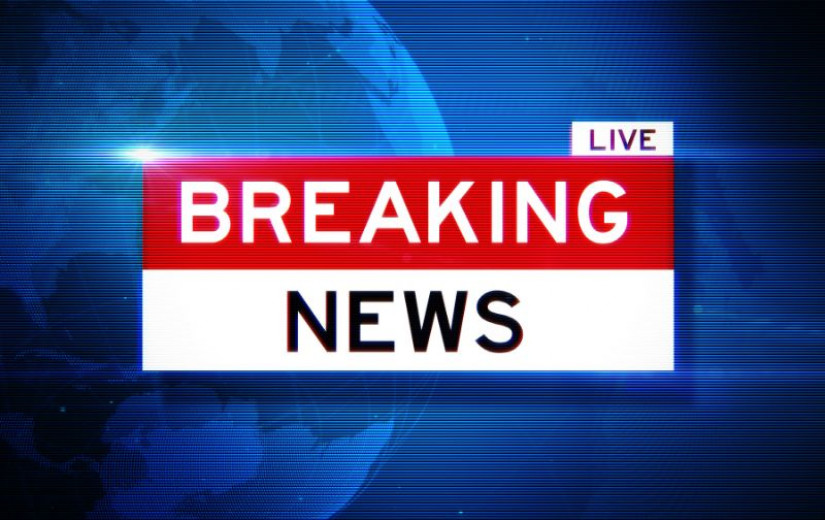Baudelaire Ceus: If you’ve ever seen the first Pirates of the Caribbean, you might remember the scene where we first meet Captain Jack Sparrow. He’s standing above the mast of his ship and bringing it into the harbor at Port Royal, a city made for and by pirates. And though Jack Sparrow isn’t a real person, that city he sailed into was very much real. In the 1600s, Port Royal on Jamaica’s southern coast was a British stronghold in the middle of Spanish territory. This made the city the perfect place for pirates who wanted to rob those Spanish ships and bring that gold back to somewhere safe. Over time, the city gained a reputation for being a place full of brothels, drunkards, and shiesty pirates. Regardless of that reputation, though, Port Royal was booming.
Sophie Elwin Harris: I mean, there was so much money rolling in. It was like the Las Vegas of the New World.
Baudelaire: But the people of Port Royal had no clue they were sitting on a geological time bomb. That is until June 7, 1692, when disaster struck. My name is Baudelaire, and this is Atlas Obscura, a celebration of the world’s strange, incredible, and wondrous places. Today, we go to the depths of the Caribbean Sea to see the hidden treasure that is Port Royal and the story of the singular day where three natural disasters brought the city to the bottom of the ocean.
This is an edited transcript of the Atlas Obscura Podcast: a celebration of the world’s strange, incredible, and wondrous places. Find the show on Apple Podcasts, Spotify, and all major podcast apps.

Baudelaire: Sophie Elwin Harris makes documentaries that typically involve a lot of archaeology. In her doc about Port Royal, she followed a team of archaeologists as they go way down into the depths of the Kingston Harbor to see what Port Royal was like in its prime.
Sophie: It was a boomtown in the New World. So basically, you had all these buccaneers and privateers, which were basically state-sanctioned pirates, sanctioned by the British government to basically steal ships and treasure off the Spanish, their enemy.
Baudelaire: You see, the thing is, the pirates were convenient allies of the British. When the British and Spanish were in periods of peace, they criminalized the pirates. But if the British were at war with Spain, then the pirates were just some hardworking men at sea trying to provide for themselves and their families.
Sophie: And it was very strategic for Britain because it was right in the middle of the Spanish Main, which was basically Florida, Mexico, and South America.
Baudelaire: Basically, what the British did was build three forts on this stretch of land on the Kingston Harbor, forming a sort of triangle shape. Within that especially protected area, Port Royal was able to grow. And when it comes to that growth, pirates were the essential workers.
Sophie: So they’re highly glamorized often and very fictionalized. But actually, these were real people with real lives, and they were doing something incredibly dangerous, not always on the right side of the law, depending on what the English government thought at the time.
Baudelaire: Regardless of how the British saw it, the pirates were bringing in some serious cash. Some of it went back to England, and some of it stayed local, turning a British outpost into a booming city.
Sophie: And it would have looked a bit like sort of, you know, 15th, 16th century London. So lots of brick houses, very, very narrow streets and alleyways, wooden and brick houses.
Baudelaire: Port Royal was a place prostitution, public drunkenness, and gambling weren’t uncommon. And that lack of strict rules was probably exactly what you wanted if you were a pirate. But another aspect of Port Royal that was especially attractive to pirates was that the city had really deep harbors. Where the vast majority of cities are built in places that have some sort of rock foundation beneath the city, Port Royal was built on a spit of sand, kind of like a mountain of sand underwater. This allowed boats to not have to anchor far offshore. They could come right up to the city.
Sophie: So they had, you know, room to dock like 500 ships. So it was very much a port city.
Baudelaire: While Port Royal was bringing in all this money from the pirates, regular people began to move to the city. You know, people typically flock to places where the resources are. And the city grew to a population of about 8,000 people, which at that time was a little more than the population of Boston.
Sophie: There would have been, you know, the people that would have run the businesses to make a city, a town possible. So you would have had cobblers, carpenters, house builders, all the trades would have to be going on, shipbuilders. So you’d have all that stuff going on, which would be supporting this kind of economy of the pirates going out and doing their thing.
Baudelaire: But the city was also on the minds of people who didn’t live there. Back in England, Port Royal had a reputation for being nothing more than a city full of sinners.
Sophie: So obviously we’re talking about a time when, you know, religion, Christianity, was very strict. And so the reputation of Port Royal back at home wouldn’t have been a good one necessarily to a lot of people’s opinions because it was full of prostitutes and, you know, fast money, and the kind of lives that people thought pirates lived. And so it had a reputation that was unchristian back at home. And yeah, obviously they thought it would get its comeuppance one day.
Baudelaire: June 7, 1692. It started as a typical day in the Caribbean port city. Beautiful sun, light breeze.
Sophie: It was Sunday morning. It was just before midday, actually. So things would have been very busy on the streets. People would have been going to market. People would have been, you know, gathering in the taverns. And then there was a massive earthquake. All of the houses in Port Royal started to shake and crumble. The church tower broke, bricks were coming off buildings, and there was really nowhere to hide. The alleyways and the houses didn’t provide much sanctuary.
Sophie: I think a sort of chaos broke out.
Baudelaire: The earthquake, which archaeologists now know was probably a 7.7 magnitude quake, was just the first disaster. What would happen next was even worse. Remember earlier when I mentioned the city was built on sand?
Sophie: So what happens when an earthquake hits sand is that you get this phenomenon called liquefaction happening, where the sand liquefies and all the water rushes to the surface. And what that does is things sink into it and they literally sink whole. So you had great big tracts of houses and land just sinking straight down into the sand, which is absolutely terrifying. So two-thirds of the city literally just sunk beneath the sea, straight into the sand, taking, of course, all the people and animals with them.
Baudelaire: But that wasn’t it for the pirate city. A few decades ago, another team of archaeologists found the wooden hull of a ship, but it wasn’t where the harbor at Port Royal had been. Instead, the ship was lodged in a house all the way across the sunken city. That meant the ship had to have been carried across the city by water. Which brings us to the third disaster to hit Port Royal that day.
Sophie: So what happened was this earthquake had also triggered a tsunami. This was called a seiche wave. So it’s a tsunami that went into the harbor. It was caused by the displacement of a lot of the seafloor jolting down and the water swooshed around the harbor and the harbor basically kept reflecting this wave. And so it was a repetitive tsunami within the harbor. And that’s what caused this ship, HMS Swan, to basically be flung by the wave across the city and into one of the buildings.
Baudelaire: Three consecutive natural disasters back to back to back brought the city to its knees and left the people and the buildings completely devastated.
Sophie: And, you know, the whole, if two thirds of the city had gone, it was a sorry ragtag of survivors. The reports say that, you know, afterwards there were, it was a horrible aftermath of injuries, disease, and a lack of food and water. And the death toll rose, you know, even more. So you’ve got, you had a death toll from the actual event of about 2,000 people. But then from the aftermath, you’ve got a death toll of about another 2,000 people. It’s just because there was no sanitation or the infrastructure had gone. So it did survive, bits of the city survived, but it never regained its position as that, you know, really successful pirate boomtown.
Baudelaire: Okay, so imagine for a bit you’re one of those people that survived. During the chaos and in the days following, you might really have thought that the city was struck down by God himself. Today, we know the disasters came as a result of the city being built in probably the worst possible place. But at the time, you just wouldn’t know. The folks who felt like they knew exactly what happened, though, were the ones back in England.
Sophie: All the sanctimonious Christians back home who disapproved of the lifestyle of people in Port Royal were all saying, this is retribution. This is God’s punishment for it being such a sinful city. So I think there was one quote that says, “By this terrible judgment, God will make them reform their lives. For there was not a more ungodly people on the face of this earth.”
Baudelaire: At the same time as the decline of Port Royal, pirate cities began popping up throughout the Caribbean, in places like what are now Cuba, Haiti, and the Bahamas. Some of those cities you can actually go see and walk amongst the ruins, or whatever those settlements morphed into. Port Royal doesn’t offer that kind of access. For hundreds of years, the city lay frozen in time at the bottom of the Caribbean Sea. Today, with the help of modern archaeology, we get to rediscover Port Royal and look at the city with new eyes.
Sophie: You can now see it. If you scuba dive or swim over these sections, you can see the footprints and the layouts of some of the buildings that were sunk. And what was amazing about the sinking was that they sunk intact. So you’ve got whole floors and bits of wall.
Baudelaire: Dozens of ships pass through Kingston Harbor every day. It’s one of the deepest harbors in the world and belongs to one of the biggest cities in the Caribbean. Over 300 years ago, boats sailing into the harbor weren’t going to Jamaica’s current capital. It didn’t even exist at that time. Instead, they were in and out of Port Royal, a city that nowadays the ships coming into the harbor probably sail over without a thought. A city built by pirates and destroyed by a catastrophe. In order to scuba dive at Port Royal, you need special permission from the Jamaican government. But in the meantime, you can watch Sophie’s documentary, Drain the Sunken Pirate City, on Disney+.
Listen and subscribe on Apple Podcasts, Spotify, and all major podcast apps.
Our podcast is a co-production of Atlas Obscura and Stitcher Studios. The people who make our show include Dylan Thuras, Doug Baldinger, Chris Naka, Kameel Stanley, Johanna Mayer, Tomeka Weatherspoon, Manolo Morales, Gabby Gladney, Amanda McGowan, Alexa Lim, Casey Holford, and Luz Fleming. Our theme music is by Sam Tindall.








